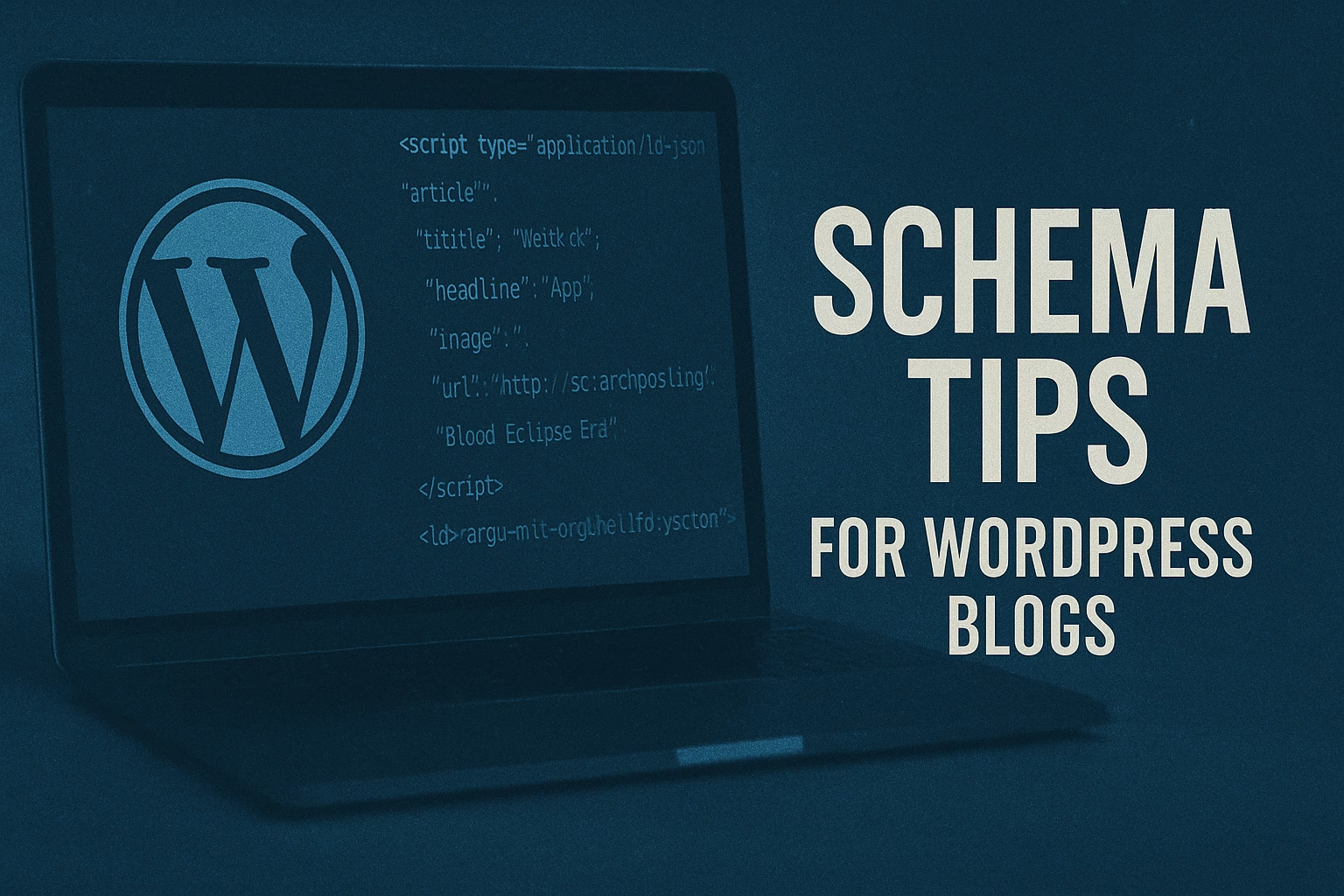Hey there, welcome back to Mensdiarie! I’m Naresh, and while I’m still learning the ropes of blogging myself, I’ve realized that sharing what I’m learning in real-time helps both you and me grow. So, in this post, I’m diving into something that has really improved my website’s visibility: Schema Markup. Whether you’re just starting your blog or have been at it for a while, this guide will walk you through the best schema tips for WordPress blogs—just like I’m using them myself.

Table of Contents
What is Schema Markup?
Schema markup is a type of code you can add to your blog that helps search engines understand what your content is about more clearly and accurately. Think of it like giving Google extra context about your posts. For example, if your blog post is a recipe, a tutorial, or a product review, schema can help display that in a rich, attention-grabbing way on the search results page.
Why Schema Matters for Bloggers
- Better Click-Through Rates (CTR): Rich snippets grab more attention
- Higher Rankings: Enhanced search appearance can lead to better placement
- Improved SEO: Makes it easier for search engines to interpret your blog content and show it to the right audience
- Voice Search Readiness: Structured data makes it easier for voice assistants to use your content
Types of Schema Useful for WordPress Bloggers
1. Article & BlogPosting Schema
Use this schema to tell Google that your page is a blog post or article. It includes your headline, author name, date, and more.
2. FAQ Schema
Great for blogs that answer common questions. You can list Q&A blocks, and they might show directly in search results.
3. How-To Schema
If you publish step-by-step guides (like grooming tips or habit-building), this is a perfect fit.
4. Person & Author Schema
Let search engines know who wrote the blog post, building your online identity.
5. Breadcrumb Schema
Shows a navigational trail in the search result, improving user experience.
6. VideoObject Schema
For bloggers who embed YouTube or self-hosted videos, this schema helps those videos appear in search.
7. Product Schema
Ideal for affiliate bloggers. This schema lets you display important product info—like price, stock status, and user ratings—right in the search results.
Best Tools to Add Schema in WordPress
1. Yoast SEO
Automatically adds basic schema like Article and Person. Easy to use.
2. Rank Math
A favorite of many bloggers (including me!). Adds multiple schema types with a few clicks.
3. Schema Pro
Paid plugin with advanced schema types and easy UI.
4. Manual Method (Advanced)
Add JSON-LD script manually using Custom Fields or Code Snippets plugin.
How to Add FAQ Schema (Step-by-Step)
- Install and activate Rank Math
- Open a blog post and scroll down to “Schema Type”
- Select FAQ Schema
- Add your questions and answers
- Update and test with Google’s Rich Results Test
Schema for Affiliate Blogs
If you promote Amazon or other affiliate products, use Product Schema to show price, ratings, etc. Make sure:
- Your affiliate links are disclosed
- You don’t fake ratings or reviews
- You update product info often
Developer Tips for Custom Schema
- Use tools like schema.org to copy valid templates
- Use Custom Post Types for portfolios or tutorials
- Use hooks in your theme’s
functions.phpto dynamically inject schema
Validating and Testing Schema
- Use Google Rich Results Test
- Use Schema Markup Validator
- Regularly test after making edits
Common Mistakes to Avoid
- Adding too many schema types in one post
- Using the wrong schema type (e.g., Review for a How-To post)
- Forgetting to update schema with your content
- Not testing your markup before publishing
Does Schema Really Help SEO?
In my experience, YES. After adding FAQ and Article schema to my grooming blogs, I noticed better impressions in Google Search Console. While it’s not a magic trick, schema gives your content a much better chance of standing out.
Final Thoughts
Learning how to blog is a journey—and understanding schema is one of those milestones that can really push your content forward. Don’t feel like you have to implement everything at once. Start with Article or FAQ schema, and build from there.
If I’m able to learn and apply this, I truly believe you can too. Let’s keep learning together.
Thanks for reading, – Naresh Sirola
Wanna know more about My Journey in Learning Blogging? Check out Learning How Start Blogging Day 1
